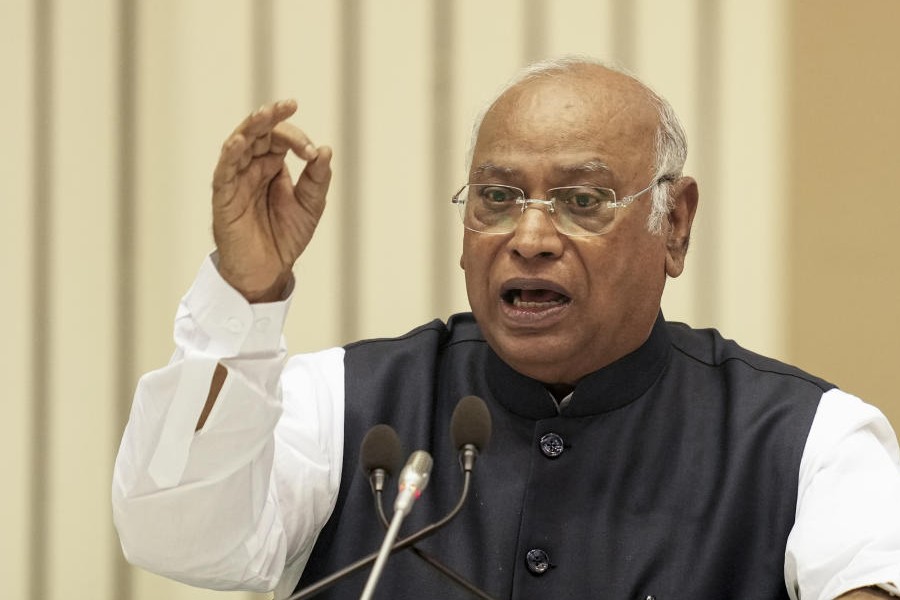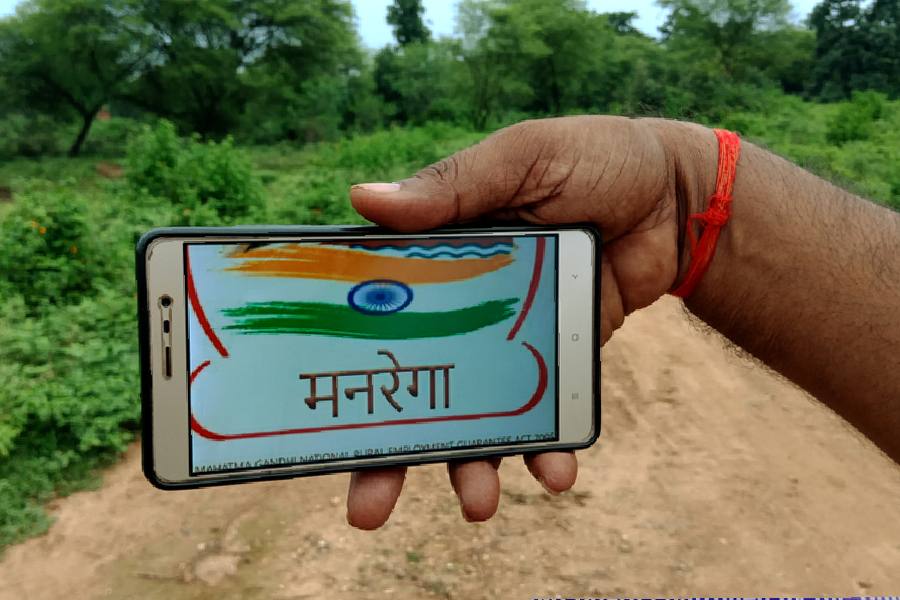|
|
| Integers of materialism |
It’s now more than a month since I was drenched, like others, in the deluge of Chokher Bali. I apologize for putting my response on record somewhat belatedly; but I’ve been waiting for the tide to recede. My concern is not so much with the film’s fidelity to the book (Tagore himself was one of the first to suggest that cinema, to come into its own, must become independent of the literary) but with its own language.
The venue at which I saw the film is the Priya cinema, that old haven for South Calcutta outings. The morality of community is, you feel in the darkness of the hall, a thin veneer; and it was as absorbing to observe the old women and daughters-in-law in the audience as it was to watch the ones in the film. The audience here is seldom absolutely silent; and, for a while, I kept confusing the sounds in the audience with the background noise on the soundtrack. At one point, I thought the “madman” from Nandan cinema (I use scare quotes because he is probably sane), the one who wanders like a dervish singing Rabindrasangeet — at one point I thought he was in the auditorium. Then I realized that the loud singing, heard in snatches behind the conversation, was, like many other noises, coming from the film; it was part of the perpetual “elsewhere” that surrounded the characters.
The constant presence of background noise in Chokher Bali is, I think, one of its many instances of homage to Satyajit Ray; and, like the other instances, its purpose seems partly parodic. These acts of homage, for example, are very different from Ray’s own homage to Jean Renoir. Ray lovingly translated the party games played by the French haute bourgeoisie in a country manor in La Regle du Jeu into the antics of a group of Calcutta Bengalis in a forest officer’s bungalow in Aranyer Din Ratri; or, more directly, reworked the astonishing scene with a woman on a swing in Une partie de campagne into the one in Charulata. Ghosh’s quotations of Ray — Binodini on a swing, or staring through binoculars; the long verandahs of Mahendra’s house — are not homage, really. They are more like a domestication, a taming, of some of Ray’s most liberating moments in the extravagant and slightly wild palace of Chokher Bali; here, in this palace, these moments, like cockatoos or imported eunuchs, are neither at home and nor do they have anywhere else to go to; they sit around with an air of foreignness and ostentatiousness that they never possessed in their original habitat.
One is never, in India, completely alone. Even as I write this, I can hear hammering, birdcall, and, further away, traffic. I first became aware of the auditory dimension of our lives on visits home from England; perhaps it takes an outsider to hear that perennial punctuation of sound. The first filmmaker to capture that mysterious, irreducible noise was a Frenchman, Renoir, in the lovely, underrated The River. It’s there that the auditory possibilities of elsewhere — the cry of a bird, the whistle of a steamboat — are captured in a living archive for the first time. It’s from this film, I believe, that Renoir’s Bengali acolyte (Ray attended its filming in Bengal) inherited his ear for the semi-audible sound in the next street, or beyond the river or the railway tracks.
Ghosh’s soundtrack at first seems in Ray’s lineage; but we soon discover that its impact is quite different. It never takes us to that “beyond”, or provides that sense of fading distance; instead, it returns us firmly to the primary site of our experience: the cinema hall. No bird ever chirped as unstoppably as the ones in the film; the “madman” from Nandan keeps weaving his way back; for no clear reason, we suddenly hear the sound of the muezzin. The effect of this soundtrack is to abolish distance, and to parody, rather than suggest, the notion of “life”; to create a vast interiority
During the intermission, I decided that Chokher Bali is a “raj” film; not so much Charulata as The Jewel in the Crown. This has not only to do with the mysterious cameo played by an Englishwoman, or with the babbling about tea, or with Binodini’s encounters with chocolate, nuns, and the English language. Tagore’s novel is set in the period of the raj, and is probably subtly inlaid with the experience of colonialism. But “raj”, in the sense I mean it, is a cultural temper invented in the Eighties; it is the stirrings of nostalgia, in a newly globalizing world, for Indian colonial history as a heritage site. The first half of the film was, I thought, suffused with the pastel shades of that special nostalgia; and both Tagore and 19th-century Bengal had become, in the film, elements in a heritage landscape that’s no more than a quarter of a century old.
The second half of the film, with its adulterous love-bites and scratches (a friend said to me that Ghosh displays, in the film, only a dim idea of heterosexual lovemaking), its separations and personal calamities — the second half is another affair altogether. After watching it, my preferred adjective for the style of the film is “operatic”. By “operatic” I mean a unique artistic practice and experience in which both kitsch and the mythic come together. This is probably especially true of early opera, which the young Nietszche derided as “bourgeois spectacle”. But it is still a characteristic of much opera; opera is almost the only art-form that can make a private sexual scandal the stuff of both overblown entertainment and mythopoeic transport. Something similar happens in Ghosh’s Chokher Bali; eschewing Tagore’s delicate and humane psychologizing, it deliberately gives us a spectacle that is larger than life. Those who go to it looking for light and shade, and complexity, are looking for them in the wrong place; light and shade are inimical to the experience I’ve called “operatic”.
A few reflections on Aishwarya Rai. People use the word “beautiful” to describe her, but I’m not sure in which sense they’re using a word that has a long and contradictory history. I don’t want to load this discussion with the moral and non-utilitarian values the word “beauty” has had; but I think we need to find a term other than “beautiful” to describe Rai’s very contemporary, and telling, appeal. Perhaps her most ardent admirers are the new beneficiaries of globalization; the people who covet Jaguar (or is it Jaquar?) bathroom fittings, and dream of their cars metamorphosing into tigers; who like to discover a bit of ancient Rome in their back garden, and Venus de Milo busts in hotel lobbies. She is one of the means by which Ghosh silently transforms Tagore’s tale of liminality, interrelationship, and social change into a narrative and aesthetic of materialism. Ghosh’s film, and filmmaking, tell us about the rewards and damage that materialism incurs upon itself.
Rai, and the famous collection from Anjali Jewellers, are not the only integers of materialism in the film. There is Ghosh’s vision of landscape and of “reality” itself, in his self-consciously superb visuals. Someone told me who the designer of Ghosh’s interiors is; but who, I wondered, designed the outdoors? Here, again, the difference between Ghosh and the Ray he pays frequent homage to is striking: in Ray, reality — whether it comprises a group of Gurkha bagpipers in the distance, or a dog lifting itself up — is provisional, sketch-like. It has the same aura of distance, of suggestiveness, that his soundtracks have. Actual locations, like Darjeeling or Benaras, have, like the sets in street-theatre, an air of being hastily put together. Location, landscape — in Ghosh’s film, they are gilded, finished. The ghats look like expensive furniture; even the sun looks more expensive than anything to be found at Anjali Jewellers. The elusive morning light in Kashi, which Ray went searching for with his camera, is, in Chokher Bali, thick with social esteem, like oil paint. There really is no “outside” in Ghosh’s film: everything in its vast, artificial interiority is caught up in a symbolic play of passion, desire, and material empowerment.
Chokher Bali has been to contemporary Bengali cinema what the fall of the Berlin Wall was to Europe. It has situated Bengali cinema firmly, almost brutally, in the current of globalization: flirtations with art-house cinema (as in Ghosh’s own early films) and half-baked exhausted commercial movies have been both rendered irrelevant by its release. Ghosh is not an “international” filmmaker, as Ray was; he is a filmmaker of the globalized universe. The absence of a real “outside” in his new film reflects the fact that there are no foreign countries, no elsewheres, in the world after globalization. His Tagore, too, is the Tagore of globalization, quite different from Tagore the “bishwakabi” or “world-poet”. Something like this was waiting to happen; now that it has, it’s brought both celebration and anxiety in its wake. Those who secretly feel at home in the present (whatever their political and cultural predilections are in public) will rejoice at discovering an artist who has understood its language so well. Others, out of joint, might experience unease and bewilderment.











